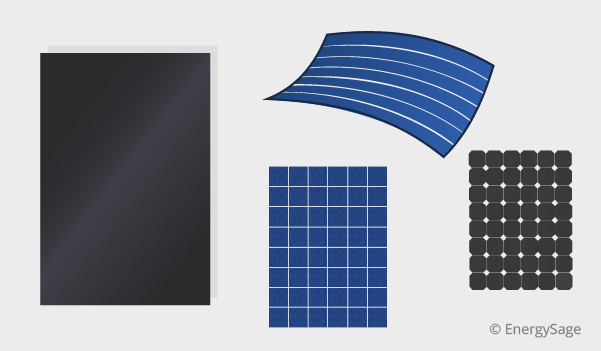7 Simple Techniques For Solar Systems
What Does Solar Systems Do?
Table of ContentsFacts About Solar Systems UncoveredSolar Systems Things To Know Before You Get ThisA Biased View of Solar SystemsAn Unbiased View of Solar Systems
There are 3 different sorts of solar panels: monocrystalline, polycrystalline, and also slim film. Monocrystalline solar panels are very effective as well as have a sleek style, yet come at a greater rate point than various other solar panels. Polycrystalline solar panels are cheaper than monocrystalline panels, nonetheless, they are less reliable as well as aren't as cosmetically pleasing.Nowadays, there are several varieties of monocrystalline solar panels on the market to pick from., are coming to be a progressively preferred monocrystalline alternative.
Since monocrystalline solar cells are made from a single crystal of silicon, electrons are able to conveniently move throughout the cell, raising general effectiveness. Not only do monocrystalline panels have the highest possible efficiency ratings, they usually also have the greatest power capacity ratings, as well. Most monocrystalline panels on the market today will have a power output score of a minimum of 320 watts, but can go up to around 375 watts or higher!.
Because polycrystalline cells have numerous silicon cells, the electrons can not move as easily and therefore, decrease the efficiency of the panel. The lower efficiency of polycrystalline panels additionally suggests they have a tendency to have a lower power outcome than monocrystalline panels, normally ranging in between 240 watts and 300 watts.
The 6-Second Trick For Solar Systems
In order to fulfill your power needs, you would certainly need to set up more slim movie panels over a large area to generate the very same amount of electrical energy as crystalline silicon solar panels. This is why thin film solar panels do not actually make feeling for household installments where area is limited.
The temperature level coefficient tells you exactly how much the power output will certainly reduce by for every 1 * C over 25 * C the panel gets. The standard temperature level coefficient for mono and polycrystalline panels generally drops someplace between -0.
With some slim movie panels, it's tough to also see the individual cells within the panel. They additionally have go right here a tendency to have less electrical wiring and busbars, meaning there's less white space. Since they are so ineffective, you would certainly require to cover your entire roofing in thin film panels - which may or might not be your style.

Some manufacturers have functioned around this with black packaging or forming the cells in different ways, yet these visual changes can affect both the cost and also efficiency of the panels. Generally, monocrystalline panels still look sleek, however they're a little bit more pronounced than slim film panels. solar systems. The procedure in which polycrystalline solar batteries are produced causes the cells to have a blue, marbled look.
The 45-Second Trick For Solar Systems
If you get on a limited budget, polycrystalline panels could make even more sense for you. We do not advise thin movie solar panels for household installations - their efficiency and longevity don't make the low price worth it, and it's unlikely you'll have virtually adequate space to set up the number of slim movie panels you would certainly require to cover your family power usage.
Since they are made from pure silicon, they can be readily identified by their dark black shade. Making use of pure silicon also makes monocrystalline panels the most space-efficient and also longest-lasting amongst all three solar panel types. This comes at an expense a great deal of silicon is thrown away to produce one monocrystalline cell, often reaching over 50%. solar systems.

Amorphous silicon see this here panels (A-Si) derive their name from their shapeless nature. Unlike mono-and polycrystalline solar cells, the silicon is not structured on the molecular level.
The smart Trick of Solar Systems That Nobody is Talking About
$0. 32-$0. 65 $1 $1. 50 $0. 70 $1 $0. 60 $0. 70 $0. 50 $0. 60 $0. 43 $0. 50 Note that these figures do not consist of the cost of installment as well as labor. With labor and also other overhead elements, the overall can climb to $2. 50 to $3. 50 per watt.

This suggests that thin-film panels can be an excellent alternative for hotter environments or places that experience even more sunlight throughout the year. The updated International Building Code of 2012 needs photovoltaic panels to match the fire score of the roof where they are installed. This is to make certain that the components do not increase the spread of fires in the event of a fire.